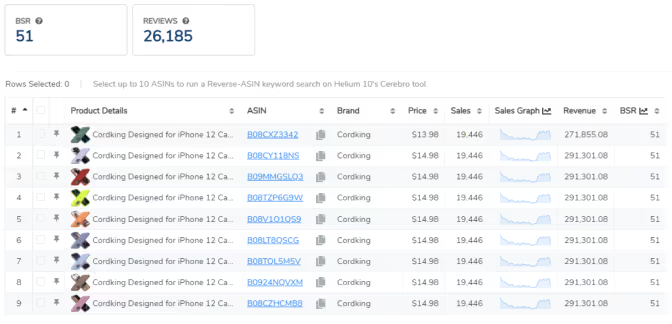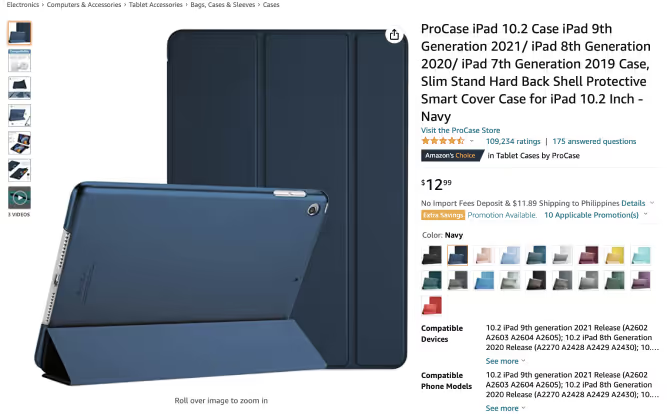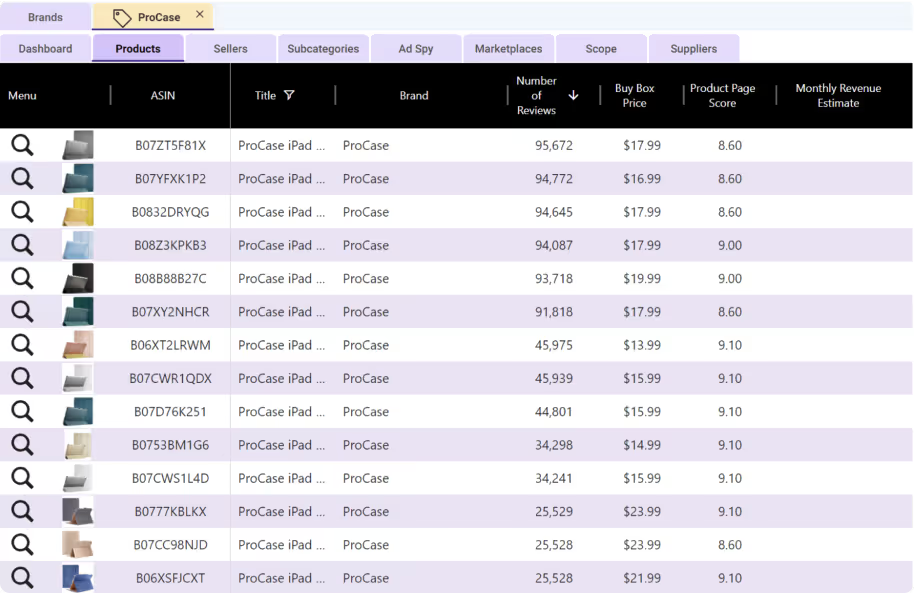
We have built many sales projections models. Our analysis shows that we are within 80-90% accuracy on most brands and products. We organize the top selling products on Amazon. We don’t track all 500 million products, but the 30 million that actually generate revenue. Sure we miss a few products that get a sale here or there. But working with thousands of brands, we have built models that are reliable and eye opening.
I doubt it. I’ve demoed them. I’ve tested them. I’ve heard many anecdotes about how off they are. There’s two reasons why SmartScout is both more accurate and a better tool.
One of the unique propositions of SmartScout is that we show our work. Estimate sales are based on Amazon sales rank. There might be instances where a category grows faster/slower than we accounted for and pushing our estimates off. Though in these cases SmartScout is directionally correct. In other words, all other products in the category will move up/down in a relative fashion. We stand by our market share as a more reliable accuracy because the estimation model will work.
If the single point of value to you is the revenue number that SmartScout puts next to a brand, then SmartScout might not be the tool for you. The power of SmartScout is in showing trends, market share, competitor ad strategy, SEO and more.
We create our estimate revenues based on Amazon best sellers rank and the category. Sometimes products don’t have a sales rank as Amazon’s category system is incomplete and a “work in progress”.
Here’s a non SmartScout estimate of a product with variations. I’m sorry buddy, but not every single style is getting 19,446 monthly sales.

Here’s a SmartScout result on the same product. By handling variations more intelligently, we’re able to get our estimates much more to the real spot. Variations are popular among Amazon sellers for good reasons. So getting this right is key. As you can see below, the sales estimates are handled differently on an ASIN by ASIN basis on a variation page. Leading to the best estimates that can be made without having insider information.

Unfortunately, many products do not have a sales rank. For whatever reason they have been removed from the categories they apply to. This is true to about 5% of Amazon products.
Additionally, we have seen many products that do have a sales rank but it’s not on a major Amazon category. Take a look at iPad cases for example. This top ranking product is only in the Tablet cases category.



We do make updates to our models regularly. We are trying to expose all the relevant data that you could hope for with your business, but unfortunately we can’t get everything. We’re just doing our best to be a step ahead of the competition and based off of what I’ve seen as a seller, we are succeeding.